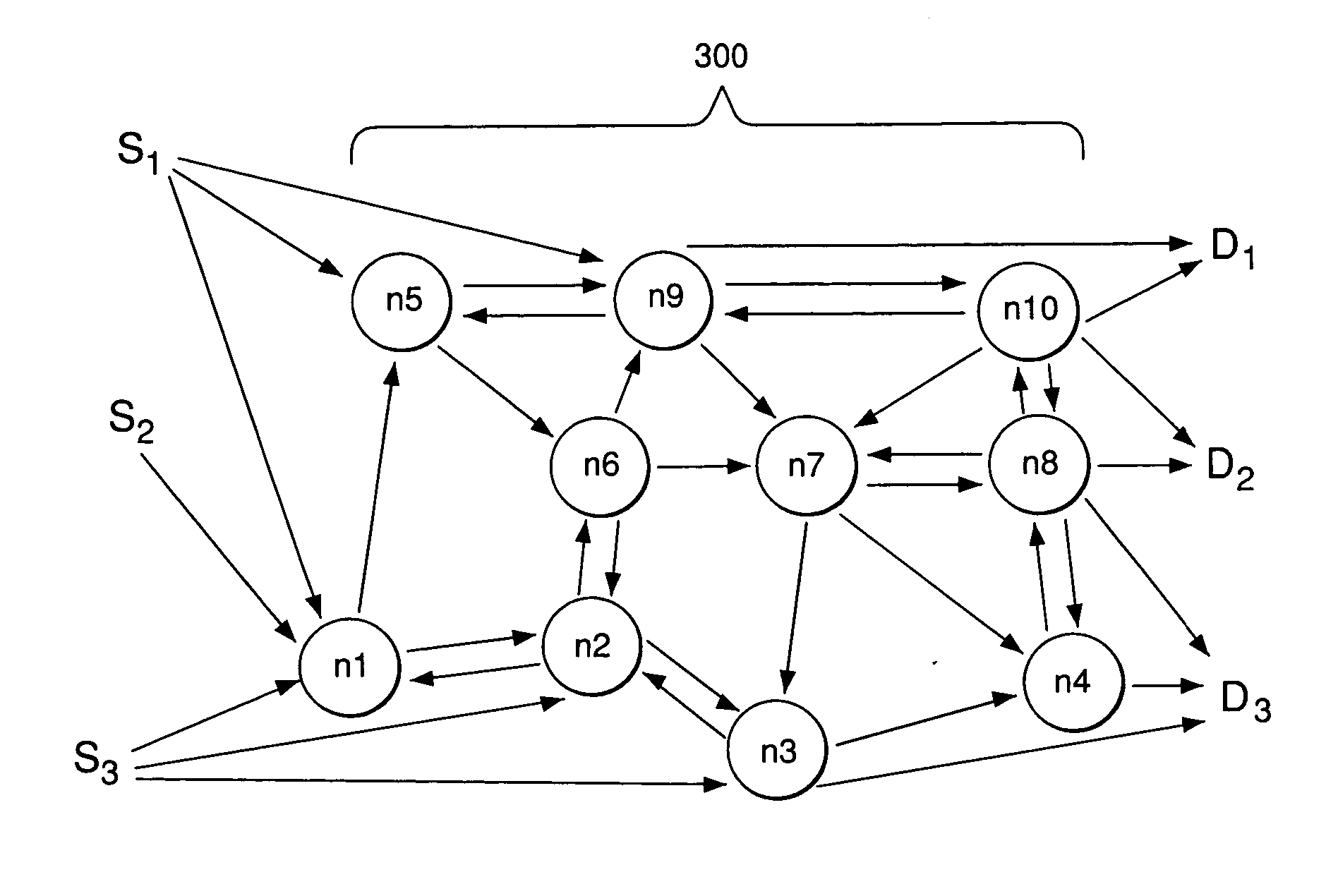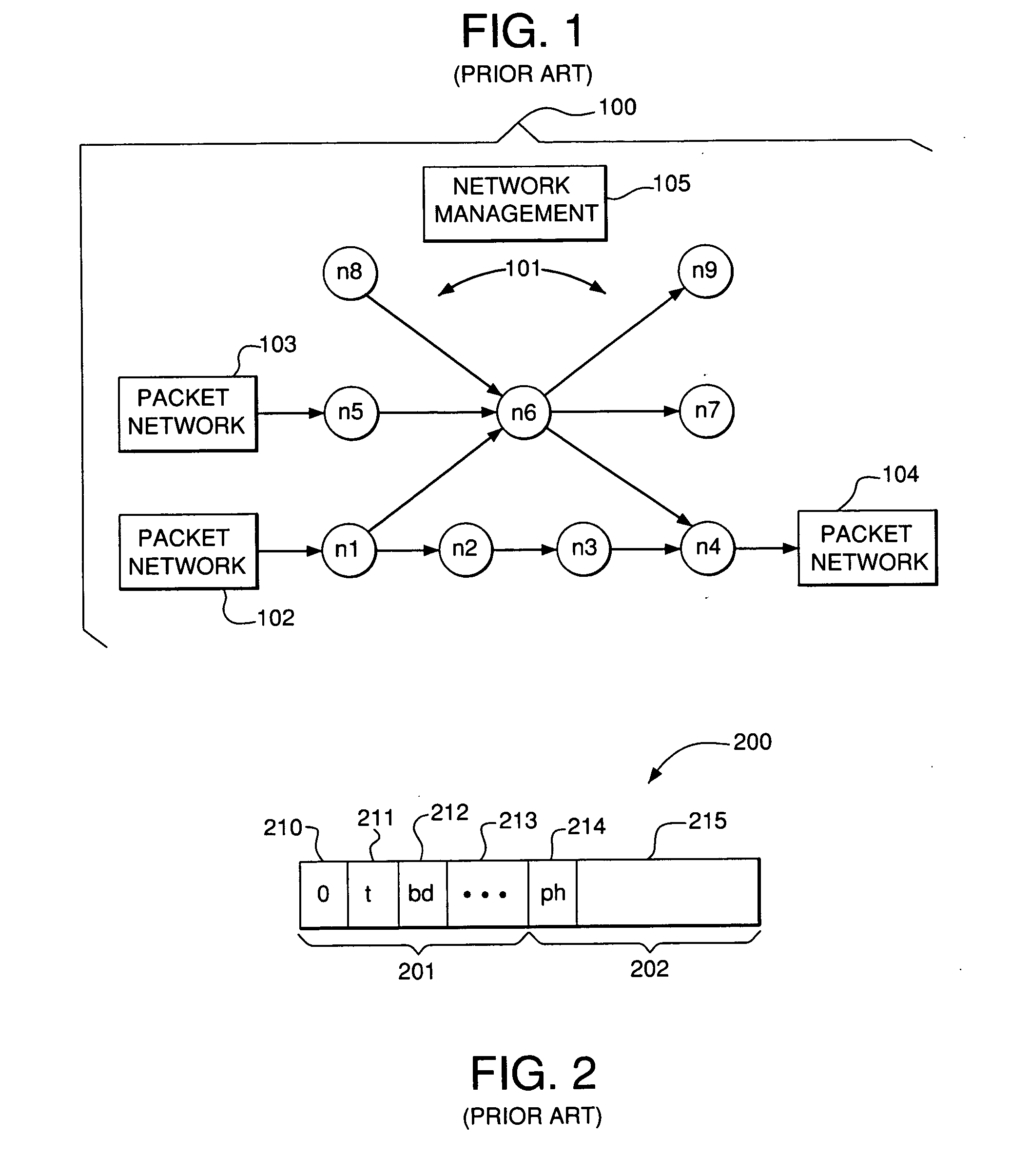Efficient and robust routing independent of traffic pattern variability
- Summary
- Abstract
- Description
- Claims
- Application Information
AI Technical Summary
Benefits of technology
Problems solved by technology
Method used
Image
Examples
Embodiment Construction
[0043]FIG. 3 shows a network 300 of interconnected nodes n1-n10 that employs an exemplary implementation of the routing method with service-level guarantees in accordance with the present invention. The routing method determines a path through network 300 for a request for a network tunnel path, such as a label-switched path (LSP). Each of the nodes n1-n10 includes one or more routers that forward packets based on a forwarding table constructed from paths determined in accordance with a routing method of the present invention. The exemplary routing method routes packets of the requested LSP in two phases, whereby incoming traffic is first sent to a set of one or more intermediate nodes in predetermined proportions, and then from the intermediate nodes to the final destination, to maximize network throughput. Such routing method might not necessarily route packets of a requested LSP along the shortest path, or minimum number of hops, through the network.
[0044] While the exemplary em...
PUM
 Login to View More
Login to View More Abstract
Description
Claims
Application Information
 Login to View More
Login to View More - R&D
- Intellectual Property
- Life Sciences
- Materials
- Tech Scout
- Unparalleled Data Quality
- Higher Quality Content
- 60% Fewer Hallucinations
Browse by: Latest US Patents, China's latest patents, Technical Efficacy Thesaurus, Application Domain, Technology Topic, Popular Technical Reports.
© 2025 PatSnap. All rights reserved.Legal|Privacy policy|Modern Slavery Act Transparency Statement|Sitemap|About US| Contact US: help@patsnap.com



